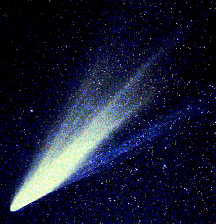
Saturday, 5 November 2011
Sun
Our Sun is not unique in the universe. It is a common middle-sized yellow star which scientists have named Sol, after the ancient Roman name. This is why our system of planets is called the Solar System. There are trillions of other stars in the universe just like it. Many of these stars have their own systems of planets, moons, asteroids, and comets.
The Sun was born in a vast cloud of gas and dust around 5 billion years ago. Indeed, these vast nebulae are the birth places of all stars. Over a period of many millions of years, this gas and dust began to fall into a common center under the force of its own gravity.
At the center, an ever growing body of mass was forming. As the matter fell inward, it generated a tremendous amount of heat and pressure. As it grew, the baby Sun became hotter and hotter. Eventually, when it reached a temperature of around 1 million degrees, its core ignited, causing it to begin nuclear fusion.
When this happened, the Sun began producing its own light, heat, and energy.
Asteroids
What are asteroids?
An asteroid is a large rock in outer space. Some, like Ceres, can be very large, while others are as small as a grain of sand. Due to their smaller size, asteroids do not have enough gravity to pull themselves into the shape of a ball. Astronomers group asteroids into different categories based on the way they reflect sunlight.
The asteroid belt is divided into an inner belt and an outer belt. The inner belt which is made up of asteroids that are within 250 million miles (402 million km) of the Sun, contains asteroids that are made of metals.
The outer belt, which includes asteroids 250 million miles (402 million km) beyond the Sun, consists of rocky asteroids. These asteroids appear darker than the asteroids of the inner belt, and are rich in carbon.
Where did the Asteroid Belt come from?
Asteroids are left over materials from the formation of the Solar System. These materials were never incorporated into a planet because of their proximity to Jupiter's strong gravity.
Comets
Among the most brilliant and most rare objects in the night sky. These soaring beacons with their beautiful tails come from the outer realms of the Solar System.
What are comets?
A comet is a small world which scientists sometimes call a planetesimal. They are made out of dust and ice, kind of like a dirty snow ball.
Where do they come from?
Comets come from two places: The Kuiper Belt and the Oort Cloud. magine a place far, far away at the very edge of the Solar System. A place where millions of comets can be seen swishing around in every direction. These icy comets are orbiting the Sun in two different places, both of which are very distant. One place is called the Oort cloud, and the other is called the Kuiper Belt.
Why do Comets leave their home in the Oort Cloud or Kuiper Belt?
A comet will spend billions of years in the Kuiper Belt or Oort Cloud. Sometimes two comets will come very close to each other, or even crash into one another. When this happens the comets change directions. Sometimes their new path will bring them into the Inner Solar System.
This is when a comet begins to shine. Up until now the comet has been among millions of others exactly the same, but as they approach the warmer Inner Solar System they begin to melt leaving behind magnificent tails.
Unfortunately, comets don't live very long once they enter the warmer part of the Solar System. Just like a snowman melts in the summer, comets melt in the Inner Solar System. Although it is the most glorious part of their lives, traveling through the Inner Solar System eventually kills them. After several thousand years they melt down to a little bit of ice and dust, not nearly enough to leave a tail. Some even melt away completely.
Subscribe to:
Comments (Atom)
(c) SCIENCE - THE SOLAR SYSTEM
WP theme by | Courtesy of Piercing, Converted to BLOGGER by BloggerThemes.Net
This template is brought to you by : allblogtools.com | Blogger Templates




